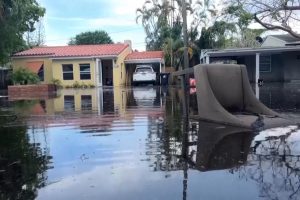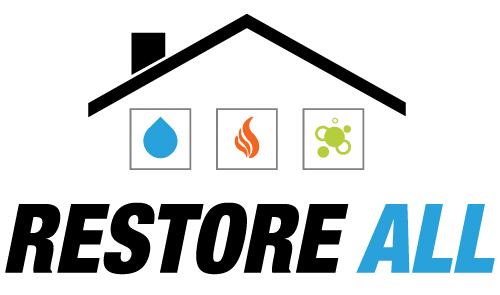 Water damage is a common type of property damage in Florida. Left unattended, the excess water can destroy your personal belongings, compromise the structural integrity of your property and pose various health risks. The earlier you start drying out your house for remediation, the higher chances you have of salvaging most of your property and avoiding significant structural damage. Regardless of the water source, it takes time to completely dry your house after a flooding emergency. But how long does it take to dry out a house after a flood? Keep reading to find out.
Water damage is a common type of property damage in Florida. Left unattended, the excess water can destroy your personal belongings, compromise the structural integrity of your property and pose various health risks. The earlier you start drying out your house for remediation, the higher chances you have of salvaging most of your property and avoiding significant structural damage. Regardless of the water source, it takes time to completely dry your house after a flooding emergency. But how long does it take to dry out a house after a flood? Keep reading to find out.How Long Will It Take to Dry Water Damage In Your House?
The number of days it takes to dry out a house after a flood depends on several factors. However, you can expect areas exposed to excess water or moisture to dry out within 6 days. Some areas can take as little as 2 days, while others may take several weeks.
Interior sections of your home that aren’t saturated with moisture typically dry out within a few days while humid parts stay wet for several days. Fortunately, water damage experts like Restoreall can speed up the drying process as they use commercial tools to control water damage.
Keep in mind that drying out your home is the first step in water damage restoration. You still have to go through a couple of other steps when cleaning up your home. Water damage experts can walk you through subsequent steps and take measures to prevent water damage from a burst pipe or dirty water from the outside.
Factors Influencing the Drying Time
Several things will determine how long it takes to complete the drying process after flood damage. Major factors include:
The volume of standing water
The amount of water on the floor is a significant factor when it comes to home drying. More standing water in your home means the drying process will take longer. Try to pump out water from your living room or any section that’s flooded with a few inches of water. If the water is at least 3 feet high in the basement, it might take several hours of uninterrupted pumping or even days to dry out the flooded area.
The Water source
Water damage typically differs depending on the water source. A home damaged by overflowing water from a broken pipe is easy to dry up and restore than a property destroyed by smelly water from sewage backups and brown water from severe storms. Dirty and polluted water poses a serious health risk and a challenge to home remediation professionals. As a result, they may require specialized equipment to dry out the wet interior. You can avoid exposing yourself to contamination and prevent long-term damage by working with the experts at Restoreall LLC.
Type of water-damaged materials
What type of materials is in your home? Wood and drywall? Construction materials also determine the level of damage and how fast you can dry up your home. Furniture, carpets, and upholstery, in general, take longer to dry out than say plastic or metal. So, think about the affected building materials. It takes more effort and time to dry wooden homes or drywall than stone ones. What’s more, is that the type of water that comes into contact with these materials also matters. Your home will take longer to clean and dry out if it’s contaminated with dirty water. If the cause of damage is clean water, a sump pump might be all you need to eject water before you start drying your floors.
Drying equipment
Your choice of interior drying equipment can make a huge difference in the time it takes to dry out the affected area. A standard fan might not dry your entire flooded basement faster than a dehumidifier or high-volume fan. Advanced drying equipment can ensure you dry out your home faster. Hiring the experts at Restoreall LLC is beneficial as you’ll have access to cutting-edge equipment for drying out flooded homes.
Drying Out Water-damaged Properties
Water damage restoration professionals generally recommend three methods for drying out your home and shortening the drying process. It’s possible to combine these three drying methods to reduce the time it takes to dry the home.
- Fans: These appliances are useful in drying water-damaged areas as they help with air circulation, which is vital in removing excess moisture. However, we don’t recommend them in homes with mold. That’s because the fast-moving air will transport mold spores to other parts of your home. Only use this method after inspecting your home and ensuring there’s no mold growth.
- Air drying: The simple act of opening doors and windows to ensure proper air circulation during the sunny and dry seasons can help speed up the drying time. This method is ideal for small spaces and not big homes with excess moisture.
- Dehumidifying: If you would like to remove moisture fast and effectively from a water-damaged property, use dehumidifiers. These devices can bring indoor humidity levels down to manageable levels. Dehumidifiers work by absorbing moisture from the air and are suitable for large spaces.
Contact Us (954-338-1111) for a Free Estimate!
—
 About Restore All
About Restore All
Restore All, LLC is a licensed, insured, full-service Professional restoration company providing Water, Fire and Mold remediation and restoration for residential and commercial property. Our certified Water & Fire damage technicians and licensed Mold assessors & remediators are committed to providing professional restoration and fast and affordable service 24 hours a day. Call us today at (954) 338-1111 to see how we can help.
> Learn More

 About Restore All
About Restore All